The Kalasha People of Northern Pakistan
categories: asia travelThe narrow bridge led to another world. The journey, up the steep valley along a bumpy, precipitous track barely wide enough for a jeep, took two long hours. The other world was the small hamlet of Balanguru, high up in the Rumbur Valley of Northern Pakistan.

Rumbur Valley
In this land of glaciers, barren landscapes, jagged high mountains, and sunlit fertile fields are three valleys in which the Kalasha people (Kalash people) live. This one, the Rumbur, is home to about 300 of their estimated 4000 population.
Jamil, a lithe, handsome clean-shaven twenty-year-old with a broad welcoming smile and mischievous blue eyes greeted me with tea and bread at the simple, newly built guesthouse. The smell of freshly cut wood mixed with the aroma of the warm bread laid out on a rickety table surrounded by four ill-matched and unsteady chairs. It was there, a little while later that I was introduced to Jamil’s father, Saifullah Jan, the chief of the Kalasha in this valley. Wearing a plain brown shalwar kameez, he is a gentle quietly spoken middle-aged man with lightly tanned skin, unkempt greying hair, and bushy eyebrows that shaded intelligent, laconic pale blue eyes.
Kalasha
There are many theories about where the Kalasha’s pale blue eyes and fair complexion came from. One says from the Kurds, another that they were originally nomads from the Central Asian Steppes. A more widely held view is the Kalasha are descendants of Alexander the Great’s army that passed through this region around 300BC. Despite a lack of oral history, the chief believes the Kalasha were a tough warrior tribe from Kafiristan – ‘land of the infidels’, which is now Nuristan or ‘land of the light’, a region of modern-day Afghanistan just a few miles up the valley. Wherever their background there is no doubt the Kalasha are unique both in looks and culture.
The chief introduced Shakil, the middle of his three sons, who was to be my guide. Unlike his father, Shakil was swarthy with darker skin and hair, deep penetrating green eyes, and a serious, thoughtful way about him. His excellent English was delivered, disconcertingly, in the staccato bursts of a drill sergeant. Where did he learn to speak such good English I wondered?: “SCHOOL” he bellowed and with that we were off for a walk to the summer fields an hour or so up the valley.
As the steepness increased and the track narrowed, I noticed how the heat of the day was tempered by the natural air conditioning effect of the freezing glacial water rushing a few feet from our path. Perched on a rock was a small grey concrete hydro-electric station which provided power to the hamlets and villages dotted along the valley.
Kalasha Religion

I missed the very recent branch laying ceremony when men placed a twig on the plinth for each member of their family. In front lay the charcoal remains of a fire on which a sacrificial goat had been cooked. No women are allowed in or near the temple.
There is an odd dichotomy in the attitude to women in Kalasha society. On the one hand, the women, who wear headdresses woven with cowrie (small egg-shaped shells), black robes heavily embroidered with brightly colored wool and small orange, yellow and green bead necklaces are free to marry who they like. They can choose to divorce, initiate elopement both inside and outside of marriage and are not judged nor frowned upon when engaging with men unrelated to them. Women of all ages in the hamlet freely associated with me, alone or in the company of other females, and most were happy to be photographed.
On the other hand, they are considered ‘impure’. Shakil pointed out a couple of large buildings behind a compound of high stone walls set away from the hamlet by an eddy in the river. This is the Bashaleni he told me, where menstruating women and those in labor are segregated before returning home, but not before ritually washing themselves, fully clothed in the river.
Life of the Kalasha
Having gone to bed at nightfall exhausted from walking at higher altitudes, I woke early the next morning to the sound of the river coursing its way down the valley. The air still had a pre-dawn coolness; although the sun was up it had not penetrated the steep narrow valley. The myna birds, unseen in the surrounding trees, welcomed the day with their chirps and squawks amidst mithering babies and families outside cooking and talking, the air above them hazy from their stoves’ woodsmoke.
From my rooftop vantage point, I was distracted by the flecks of orange, green, and yellow threads embroidered into women’s dresses against the monotone grey-brown houses. The men dressed in drab-colored shalwar kameez were barely discernible.
The hamlet has a one jeep width road running through it off which lead alleyways and steps. The walls of the houses are built up of large rocks from the riverbed, reinforced with a lattice of interlocking timbers and held together with grey-brown mud. The squat houses huddled higher on the slopes, away from floods, were designed to withstand earthquakes. The roof of one house is the terrace for the one above, on which I saw vivid orange apricots and off-white mulberries drying out on colorful sheets.
Later, walking past homes I caught glimpses of the single room interiors, illuminated only from a small opening in the ceiling through which the smoke from the winter stove escaped. In one home, rough, worn reddish-brown carpets lined the floor, along three walls, were raised platforms covered with colorful blankets used as seating during the day and communal beds at night. The remaining wall space was a mish-mash of shelves and cubby holes storing the family’s pots, pans, plates and jars of fruit, lentils, and flour. I imagined the family in winter all wrapped in blankets huddled around the stove keeping warm and drinking tea.
Kalasha Crafts
I noticed one woman hand-spinning bright green wool on a large bobbin. Her left hand twiddled while the right sent the bobbin into a gyroscopic spin. Eventually, these colorful threads would be turned into the embroidered flowers, leaves, and motifs which decorate the black robes and headdresses worn by the women, young and old.
Further along, a group of women squatted on low stools sewing small colorful beads and cowrie shells on to Kapas, the ceremonial headdresses used in the main Kalasha festival which takes place every August. This three day ‘Uchal’ festival celebrates the harvest with singing and dancing at the neighboring hamlet’s Dancing Place, a large covered square at the top of a steep incisor shaped hill. Young girls, meanwhile, unsuccessfully, tried to corral half-naked grubby toddlers playing around the charred remains of breakfast’s fire.
Hike to the Afghan Border
I stopped at a shop to buy water, biscuits, and fruit for a planned ten-kilometer hike to the head of the valley where, on the virtual border with Afghanistan, was an old Nuristani village. The shopkeeper invited me into his adjoining home. The large inner courtyard, with three rooms off it, was a playground for nine or so youngsters busy running around, climbing, hiding, and playing tag. Three generations of women sat around chatting, laughing, and occasionally glancing up to check on the children. In a small lean-to, I was surprised to see a homemade still dispensing clear and pure mulberry alcohol drop-by-drop into a large green bottle.
- Get an eSim to be able to use your smartphone abroad.
- Get a universal plug adapter
- Book Your Accommodation HERE
- Search for Great Tours HERE
- Buy Travel Insurance
- Get a Car Rental

Later, as the sun was leaving the valley and dusk approached, my nose twitched with the citrus notes of freshly cut Juniper trees. There was a different timbre and cadence between the sounds of the hamlet in the evenings and mornings. Voices seemed louder; the swishing of yards being swept more urgent, young children ran, jumped, and shouted joyfully. A game of football took place on a roof beside a group of young boys play fighting. On another roof a girl and boy flirted, she doe-eyed and gently slapping his arm, him taking the punishment with a coy smile. Quite suddenly day become night, Small lanterns and bare bulbs illuminated the faces on verandas with a ghostly pallor. Sounds became muted as conversations were hushed as the younger children had gone to bed.
Conclusion
Reluctantly, I left the next morning to continue my travels in the region. It is easy to assume this hamlet is an oasis of calm and serenity nestled in a happy valley but walking with Shakil through Muslim hamlets on the way to the Afghanistan border I sensed an uneasy truce between these disparate cultures. This was confirmed over tea with Saifullah Jan. He spoke earnestly of regular court attendances seeking protection for his people from proselytizing imams, dealing with logging rights disputes, and fighting for central government grants. All of which seemed to weigh heavily on his shoulders.
Despite threats to their unique culture, the Kalasha remain a steadfastly peaceful, welcoming and hospitable people who live in an enchanted corner of Northern Pakistan.
4 Responses to “The Kalasha People of Northern Pakistan”
Leave a Reply
Tags: adventure travel, article, kalash, pakistan


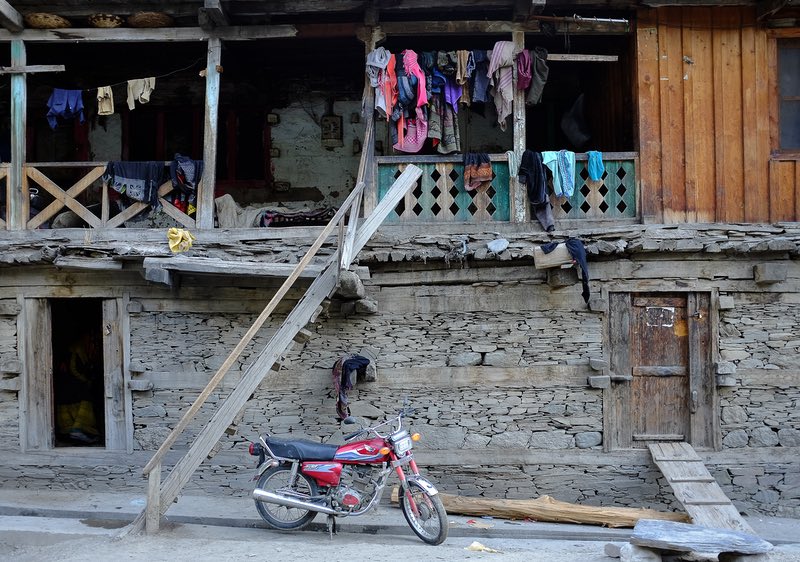
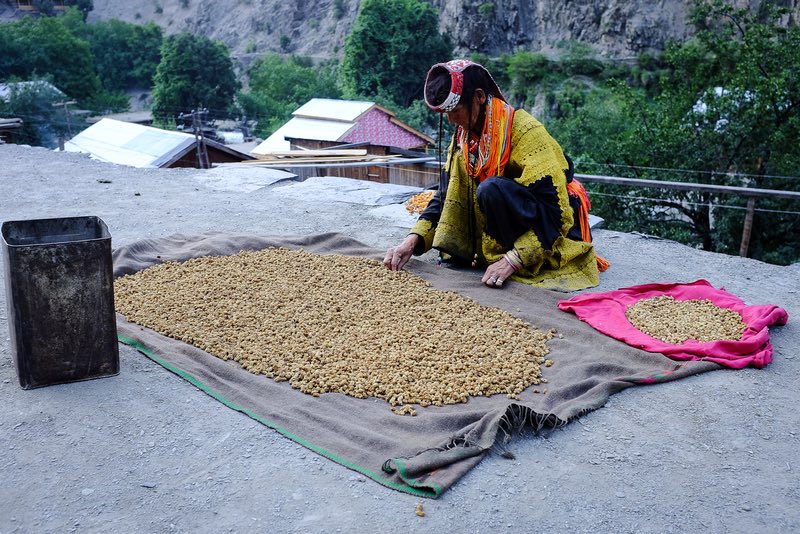
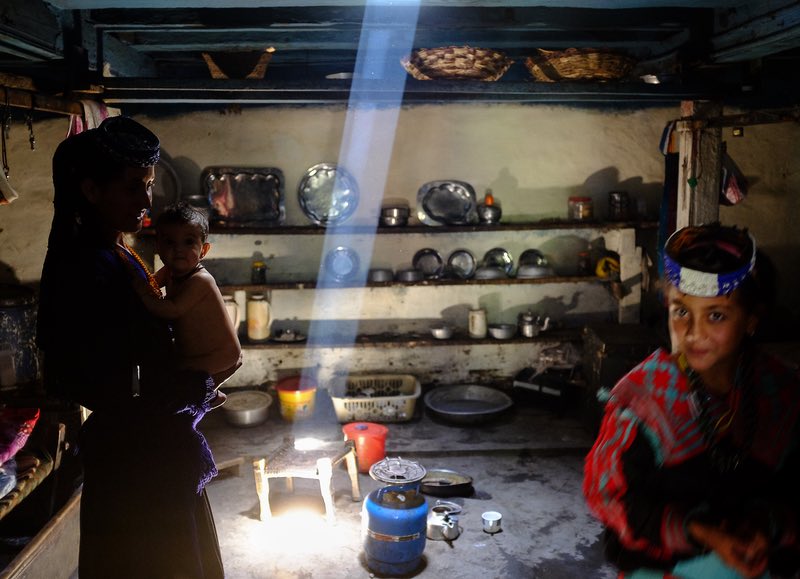
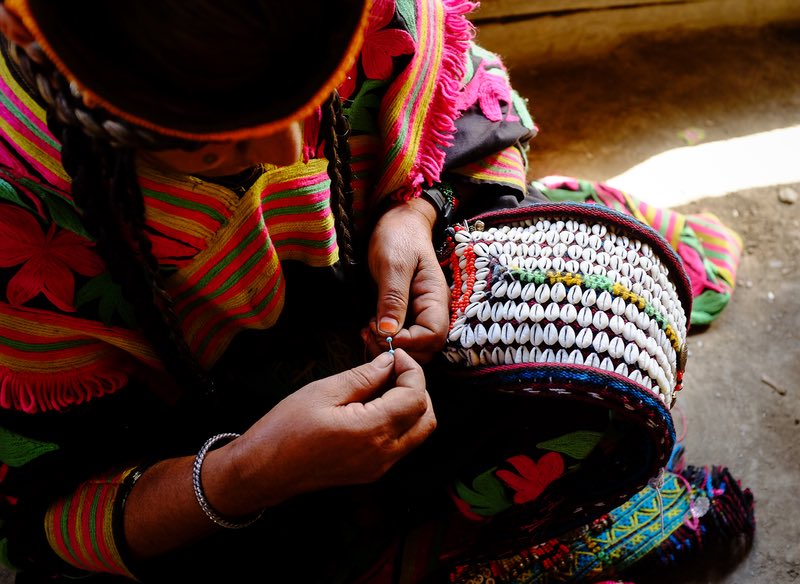
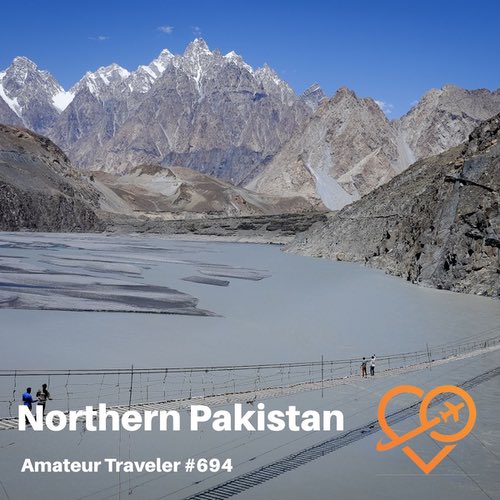 Travel to Northern Pakistan – Episode 694
Travel to Northern Pakistan – Episode 694 The Road to Islamabad – Pakistan
The Road to Islamabad – Pakistan Travel to Northern South Korea – Episode 485
Travel to Northern South Korea – Episode 485 Trekking in the Himalayas in Northern India – Episode 63
Trekking in the Himalayas in Northern India – Episode 63

Edwin Juen Jr.
Says:February 14th, 2020 at 8:56 pm
Their fascinating art and culture reminded me of our T’boli Tribe here in the Philippines. It’s a pleasant experience to encounter a small community like this.
Shane Marcus
Says:February 26th, 2020 at 10:09 pm
Pakistan is one of the most underrated places around the world. Still, there are several such gems in Pakistan. Thank you for sharing.
Leena
Says:May 25th, 2020 at 1:12 am
Even being small country pakistan is rich in culture. Love from Nepal
Nick
Says:July 22nd, 2021 at 12:51 am
Remarkable article about interesting facts of Kalasha people. I really appreciate your efforts. I learned many interesting facts of Kalasha. Thank you very much for sharing it.